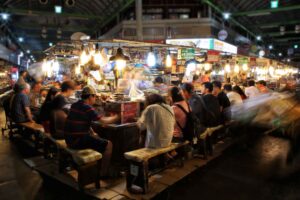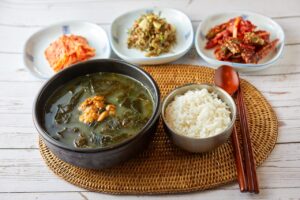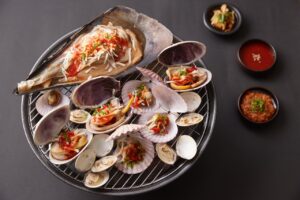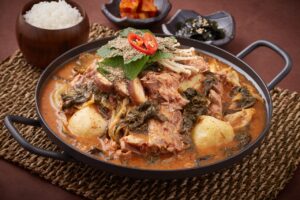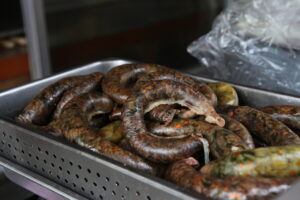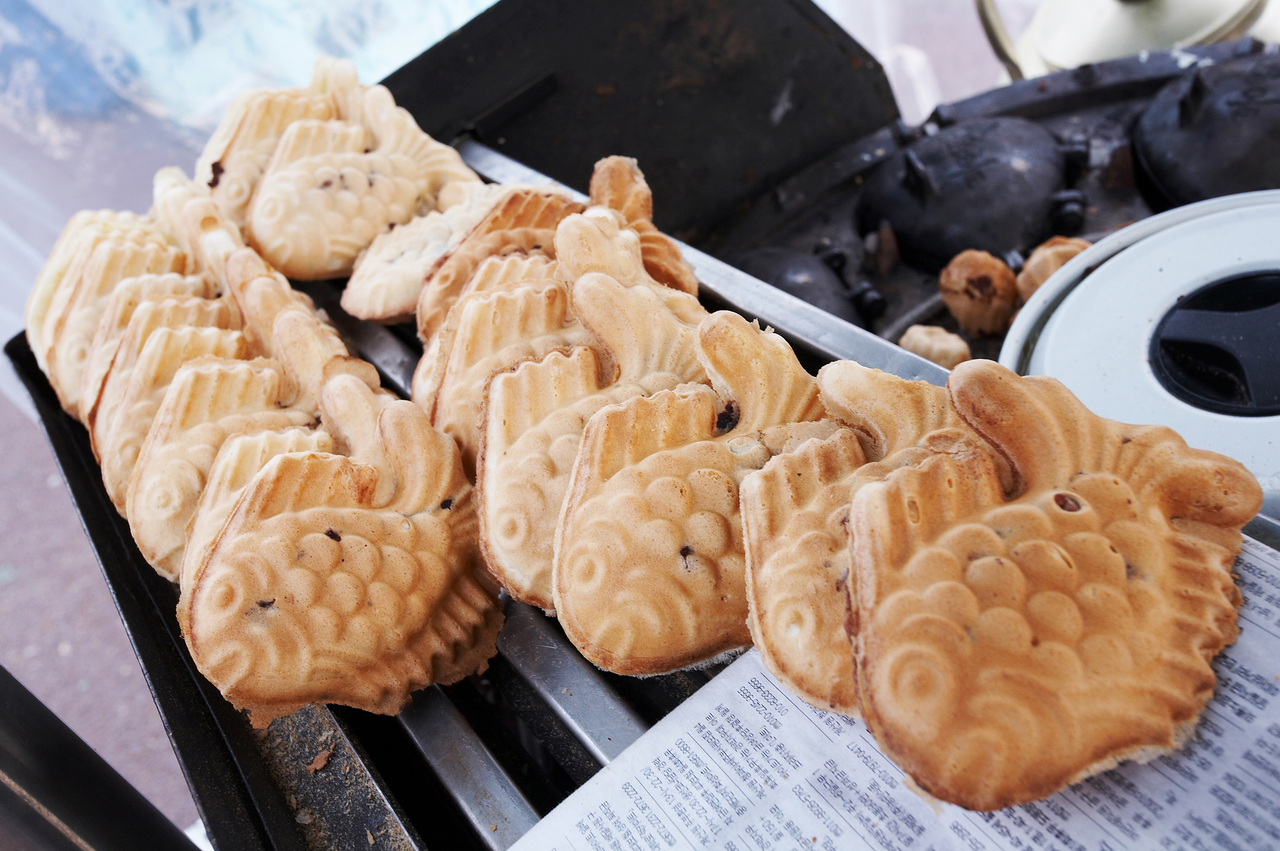
Bungeoppang1 ⓒ한국관광공사 사진갤러리 한국관광공사 브이앤드
What is Bungeoppang?
Bungeo-ppang (봉어빵) is a popular Korean snack or street food. It is a fish-shaped pastry typically filled with sweet red bean paste, although there are also variations with other fillings such as custard, chocolate, or even cheese. The name “bungeo-ppang” literally translates to “carp bread,” and it is called so because of its fish-like shape.
The pastry is made using a special mold that resembles a fish, and the batter is poured into this mold, with the sweet filling added before closing the mold. Then, it is cooked until the outside becomes crispy and golden while the inside remains soft and sweet. Bungeo-ppang is often enjoyed during the colder months, as the warm, sweet filling is comforting in chilly weather.
Bungeo-ppang is a nostalgic and popular snack in South Korea and can be found at street food stalls, markets, and even in some bakeries. It’s a delightful treat for those who have a sweet tooth and enjoy exploring different types of street food.

History
Bungeoppang, often referred to as “fish-shaped bread” in English, is a popular South Korean street food known for its unique fish-shaped appearance. Its history dates back to the early 20th century. Here’s a brief history of Bungeoppang:
Japanese Origin: Bungeoppang is believed to have originated in Japan during the Japanese colonial period (1910-1945) when Korea was under Japanese rule. The concept of a fish-shaped pastry was brought to Korea during this time, and it was adapted to Korean tastes.
Development in Korea: After its introduction, Bungeoppang underwent several modifications to suit the Korean palate. Instead of the traditional Japanese ingredients, Koreans started using red bean paste, a common filling in Korean pastries, as the primary filling. This change in filling made the snack distinctly Korean.
Rise in Popularity: Bungeoppang gained popularity as a street food snack in South Korea, becoming a staple in Korean markets and street food stalls. The fish shape, typically featuring a carp, symbolizes good luck and abundance in Korean culture, making it a popular choice for both locals and tourists.
Variations and Modernization: Over the years, Bungeoppang has evolved, and variations with different fillings, such as custard, chocolate, and even cheese, have emerged. Modern cooking techniques and equipment have also improved the preparation and consistency of this beloved snack.
Seasonal Treat: Bungeoppang is often associated with the colder months in Korea, as the warm, sweet filling provides comfort and warmth during chilly weather. However, it is enjoyed year-round and is a symbol of Korean street food culture.
Global Influence: Bungeoppang has gained recognition beyond South Korea, especially in countries with a Korean diaspora and in some parts of Asia. It has become a popular treat at Korean festivals and events worldwide.
Today, Bungeoppang is not just a delicious snack but also a cultural icon representing the fusion of Japanese and Korean culinary influences and the creativity of Korean street food vendors. Its history reflects how food can adapt and transform over time while maintaining cultural significance.
Cooking Method
Making Bungeoppang at home can be a fun and delicious culinary adventure. You’ll need a special fish-shaped mold to achieve the characteristic shape, and the following is a basic recipe for making Bungeoppang with a sweet red bean paste filling:
Ingredients:
For the Batter:
1 cup all-purpose flour
2 tablespoons sugar
1/2 teaspoon baking powder
1/4 teaspoon salt
1 egg
1 cup milk
1/2 teaspoon vanilla extract
For the Filling:
Sweet red bean paste (you can buy this pre-made at an Asian grocery store or make it from scratch) Instructions:
Prepare the Batter:
In a mixing bowl, combine the all-purpose flour, sugar, baking powder, and salt.
In a separate bowl, whisk the egg and add milk and vanilla extract.
Gradually pour the wet ingredients into the dry ingredients, stirring until the batter is smooth and well combined. The batter should be relatively thin, similar to pancake batter. If it’s too thick, you can add a bit more milk.
Heat the Bungeoppang Mold:
Preheat your fish-shaped Bungeoppang mold on the stovetop. You can lightly grease the mold with cooking oil to prevent sticking.
Fill the Molds:
Pour a small amount of the batter into the bottom half of the fish mold, making sure to cover the entire surface.
Add a spoonful of sweet red bean paste in the center of the batter, but don’t let it touch the edges of the mold.
Close the Mold:
Carefully close the top half of the fish-shaped mold onto the bottom half, sandwiching the red bean paste between the batter.
Cook the Bungeoppang:
Place the closed mold on the stovetop and cook over medium heat. You may need to rotate the mold occasionally to ensure even cooking.
When the batter becomes crispy and golden brown (usually in 2-3 minutes), carefully flip the mold to cook the other side until it’s golden brown as well.
Remove and Serve:
Carefully open the mold, and your Bungeoppang should have a beautiful fish-shaped appearance.
Remove the Bungeoppang from the mold and let it cool for a minute before serving.
Enjoy your homemade Bungeoppang! Remember that you can experiment with different fillings and even add a touch of creativity to make this classic Korean snack your own.
Where to buy it in Korea?
You can find Bungeoppang in South Korea at a variety of places, as it’s a popular street food and snack. Here are some common places where you can buy Bungeoppang:
Street Vendors and Markets: Bungeoppang is a quintessential Korean street food, so you’ll often find street vendors selling it at bustling markets, near tourist attractions, and in popular food streets.
Food Stalls at Festivals: If you’re visiting during a festival or cultural event, there will likely be food stalls that offer Bungeoppang, along with other Korean street foods.
Convenience Stores: Many convenience stores in South Korea sell pre-packaged Bungeoppang, making it easy to grab and go.
Bakeries: Some bakeries may offer their own versions of Bungeoppang, both the traditional red bean paste-filled ones and modern variations with different fillings.
Specialty Bungeoppang Shops: In larger cities like Seoul, you might also come across specialty shops dedicated to Bungeoppang. These shops may offer a wide range of flavors and fillings.
Traditional Markets: Traditional markets are excellent places to find authentic Bungeoppang made by local vendors who have been perfecting their recipes for years.
Tourist Areas: If you’re in a touristy area, Bungeoppang is often readily available to cater to both local and international visitors.
hen in South Korea, don’t hesitate to explore the local food scene, including street markets and stalls, to discover the best Bungeoppang vendors. It’s a delightful treat that you shouldn’t miss during your visit.
Recommend to Read >>>Top3 Famous Oyster Dishes in S.Korea
